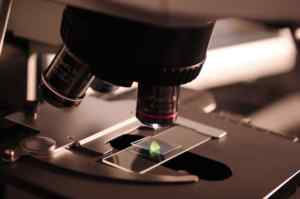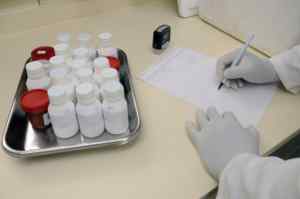
The holiday season is right around the corner, and what better way to celebrate Christmas and New Year’s than by scheduling that vasectomy you’ve been thinking of doing for months? But just in case you’re still on the fence, here are a few reasons to consider this low-risk, rewarding procedure.
13 Reasons to Get a Vasectomy This Christmas
1. Most importantly: A vasectomy is extremely effective in preventing pregnancy.
While it’s not 100 percent effective (just like any other form of contraception or birth control that isn’t abstinence), a vasectomy yields a 99+ percent success rate.
2. It’s reversible.
Maybe you decide later on that you DO, in fact, want children. Whatever your reasoning, a vasectomy can easily be reversed, so you can enjoy its long-lasting benefits without the fear of permanent sterility.
3. It’s affordable.
Here at One Stop Medical Center, we keep our Easy VasectomyⓇ costs as transparent and fair as possible. For patients who pay with cash, check or charge card, we offer a discounted rate that’s significantly lower than those of other clinics.
4. The risks are low.
Our no-scalpel procedure is incredibly safe with very few potential risks or complications. While a very small percentage of patients experience post-surgery bleeding, infection or pain, a vasectomy is one of the safest procedures performed overall.
5. Your sperm count remains unaffected.
Vasectomies don’t halt sperm production. The procedure merely prevents your sperm from having access to being released. However, some sperm may remain in the semen for a small window of time immediately after the surgery, so be sure to use a form of birth control during this phase.
6. The procedure only takes a few minutes to complete.
The actual snipping takes about 10 minutes, while the entire surgery from start to finish (including setup and cleanup) requires about one hour. That’s basically one episode of Black Mirror!
7. It doesn’t change your hormones or sexual functioning.
A vasectomy does not affect the penis or a man’s ability to perform sexually. Most couples report that they do not experience changes in sexual activity or function following the procedure.
8. A vasectomy is very straightforward and easy to understand.
The whole thing is quite simple. Performed in a doctor’s office, the scrotum is opened before the two vas deferens are cut and stitched shut. Done.
9. The recovery process is pretty quick.
Downtime only takes about 7-10 days, with most men returning to regular activities (except heavy lifting) within two weeks. Other than keeping the area iced and avoiding straining, the recovery period is pretty chill and gives patients an excuse to lie on the couch for a few days.
10. You and your partner can have sexual freedom.
Think about it—never having to worry about birth control or contraception again. No more concerns about whether your partner took her pill on time, or if a last-minute run to the pharmacy is needed. So much less stressful.
11. More vasectomies encourages more family planning worldwide.
Our planet doesn’t have enough resources to accommodate our growing population, and many areas of the world are still being introduced to family planning. As vasectomy procedures become more accessible and culturally accepted, more men will hopefully choose the vasectomy route and participate in family planning.
For a vasectomy consultation, please call us at (952) 922-2151 or stop by our Edina office. We look forward to hearing from you!
 The fear of increasing one’s risk of prostate cancer has stopped some men from undergoing a
The fear of increasing one’s risk of prostate cancer has stopped some men from undergoing a  One of the biggest risks and potential effects of undergoing a
One of the biggest risks and potential effects of undergoing a  Led by a small team of scientists from the Institute for Therapeutics Discovery and Development at the University of Minnesota, the search for a non-hormonal male birth control pill ultimately zeroed in on the toxic substance known as ouabain. Found in two types of African plants, ouabain was traditionally used as poison on hunting arrows and is sometimes medically used to treat heart arrhythmias.
Led by a small team of scientists from the Institute for Therapeutics Discovery and Development at the University of Minnesota, the search for a non-hormonal male birth control pill ultimately zeroed in on the toxic substance known as ouabain. Found in two types of African plants, ouabain was traditionally used as poison on hunting arrows and is sometimes medically used to treat heart arrhythmias. If you’re looking for a natural, inexpensive way of boosting sperm quality and overall fertility, the answer may lie within…tomatoes?
If you’re looking for a natural, inexpensive way of boosting sperm quality and overall fertility, the answer may lie within…tomatoes? As the sixth annual
As the sixth annual  From self-order kiosks to robot vacuum cleaners and robot cafes, the rise of robot-assisted experiences in recent years has been undeniable. But would you ever consider participating in a robot-assisted surgical procedure?
From self-order kiosks to robot vacuum cleaners and robot cafes, the rise of robot-assisted experiences in recent years has been undeniable. But would you ever consider participating in a robot-assisted surgical procedure? However, costs aside, it’s still noteworthy to highlight the reliability and effectiveness of robot-assisted vasectomy reversals.
However, costs aside, it’s still noteworthy to highlight the reliability and effectiveness of robot-assisted vasectomy reversals. 
 Dr. Shu and One Stop Medical Center are proud to support WVD for a sixth straight year. Our clinic will offer a gift card for one free large pizza to all patients who
Dr. Shu and One Stop Medical Center are proud to support WVD for a sixth straight year. Our clinic will offer a gift card for one free large pizza to all patients who  1. Walnuts
1. Walnuts 5. Dark Chocolate
5. Dark Chocolate In a landmark study from the Vasovasostomy Study Group (VVSG) published in 1991, Dr. Arnold Belker and four other expert microsurgeons examined various facets of vasectomy reversal, including the risk of birth defects. Their trial, which followed 291 children born post-vasectomy reversal, found that only three of the 291 subjects displayed birth defects. That’s a one percent birth defect rate.
In a landmark study from the Vasovasostomy Study Group (VVSG) published in 1991, Dr. Arnold Belker and four other expert microsurgeons examined various facets of vasectomy reversal, including the risk of birth defects. Their trial, which followed 291 children born post-vasectomy reversal, found that only three of the 291 subjects displayed birth defects. That’s a one percent birth defect rate.  After undergoing a
After undergoing a  Last month, we
Last month, we  You may be familiar with the term “antibodies” as “something that helps the body ward off disease,” but the notion of sperm antibodies might seem counterintuitive. After all, why would the body want to destroy perfectly good sperm?
You may be familiar with the term “antibodies” as “something that helps the body ward off disease,” but the notion of sperm antibodies might seem counterintuitive. After all, why would the body want to destroy perfectly good sperm? The height of the eugenics movement (1920s to mid-20th century) saw compulsory sterilization programs established in over 30 states, resulting in over 60,000 sterilizations of often healthy people. Criminals and prison inmates were especially targeted, as well as those deemed “feeble-minded,” mentally deficient, or simply capable of passing on undesirable genes.
The height of the eugenics movement (1920s to mid-20th century) saw compulsory sterilization programs established in over 30 states, resulting in over 60,000 sterilizations of often healthy people. Criminals and prison inmates were especially targeted, as well as those deemed “feeble-minded,” mentally deficient, or simply capable of passing on undesirable genes. MINNEAPOLIS, Minnesota — Dr. Steven Shu, founder of
MINNEAPOLIS, Minnesota — Dr. Steven Shu, founder of  Dr. Shu, MD, MBA, is a cosmetic surgeon and proceduralist and founder of MVI and Surgeon Volunteers. Since joining No-Scalpel Vasectomy International, Inc (NSVI), an international medical volunteer organization led by urologists Dr. Doug Stein and Dr. Ramon Suarez, in 2014, Dr. Shu has completed six mission trips to Haiti and the Philippines.
Dr. Shu, MD, MBA, is a cosmetic surgeon and proceduralist and founder of MVI and Surgeon Volunteers. Since joining No-Scalpel Vasectomy International, Inc (NSVI), an international medical volunteer organization led by urologists Dr. Doug Stein and Dr. Ramon Suarez, in 2014, Dr. Shu has completed six mission trips to Haiti and the Philippines. Your doctor will test your semen approximately 12 weeks after your vasectomy to examine for presence of motile sperm. If test results show that your semen is sperm-free, then the vasectomy was successful, and additional birth control will no longer be necessary. Some patients’ semen may show a small number of non-motile sperm, whereby the risk of pregnancy is very low, and additional birth control may not be needed.
Your doctor will test your semen approximately 12 weeks after your vasectomy to examine for presence of motile sperm. If test results show that your semen is sperm-free, then the vasectomy was successful, and additional birth control will no longer be necessary. Some patients’ semen may show a small number of non-motile sperm, whereby the risk of pregnancy is very low, and additional birth control may not be needed. After undergoing a vasectomy reversal, patients can expect a recovery process similar to that of their original vasectomy. Pain and swelling in the groin is to be expected for about 1-3 weeks, but most patients are able to return to work and daily activities within one week. Below is a breakdown of what to expect for post-surgery care and recovery:
After undergoing a vasectomy reversal, patients can expect a recovery process similar to that of their original vasectomy. Pain and swelling in the groin is to be expected for about 1-3 weeks, but most patients are able to return to work and daily activities within one week. Below is a breakdown of what to expect for post-surgery care and recovery:
 Do inform your doctor about any other medications you may be taking.
Do inform your doctor about any other medications you may be taking. Myth: In Vitro Fertilization (IVF) is quicker and easier than having a vasectomy reversal.
Myth: In Vitro Fertilization (IVF) is quicker and easier than having a vasectomy reversal. Myth: Couples should not try to conceive right after a vasectomy reversal for fear of a “leftover, defective sperm.”
Myth: Couples should not try to conceive right after a vasectomy reversal for fear of a “leftover, defective sperm.”








